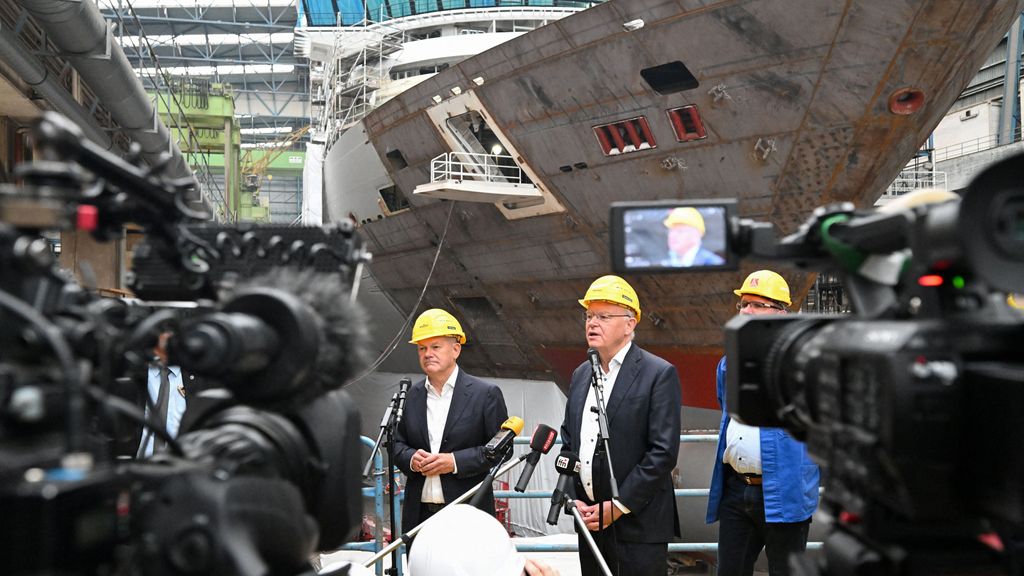In cooperation with
RTV North
News News•
The German government is doing everything it can to save the troubled Meyer Werft shipyard in Papenburg. The shipyard, located on the border with the province of Groningen, is one of the largest cruise ship builders in the world. It employs 3,100 people, including an unknown number from the Netherlands.
The government in Berlin and the state of Lower Saxony are ready to guarantee €900 million. In addition, the German government is reportedly set to take an 80 to 90 percent stake. German media.
German Chancellor Scholz travelled to Papenburg via Groningen Eelde Airport this afternoon to announce the news at the shipyard. According to him, the question was not at all whether the German government would help the shipyard, but simply how. “Germany, as the world’s third-largest economy, needs a strong maritime sector,” the Chancellor said, describing the yard as “the jewel in the industrial crown.”
Disney
The centuries-old Meyer family yard, for which the Ems River was dredged and widened, has been struggling financially since the coronavirus crisis. After a handful of high-profile cases emerged on cruise ships, cruises were canceled and shipping companies stopped ordering new ships.
The sector is now under fire from climate activists. But Papenburg’s order book is once again well-stocked. For example, the billion-dollar US conglomerate Disney has ordered four large cruise ships. The problem is that Meyer Werft has to pay for the construction of the ships themselves. That amounts to almost a billion euros per cruise ship. The shipyard previously announced that the money for this was not available. It will run out by mid-September.
Now that the German state has come to the rescue, the problem seems to have been solved. This means that the shipyard, a family business since its founding in 1795, will now become a state-owned enterprise. It will retain this status until at least 2027.
East Groningen
It was stressed in Papenburg that the financial support of the millions is not only important for the arena itself, but also for all suppliers in Germany and in the east of Groningen, according to reports. RTV NorthAn estimated 18,000 people work for suppliers in total.
The IG Metall trade union had previously feared mass layoffs. A spokesman now describes the financial contribution as a “necessary solution”.
Although this involves a large amount of state aid, Chancellor Scholz does not expect any problems with the EU. The German parliament, the Bundestag and the Lower Saxony state parliament still have to reach a formal agreement.





